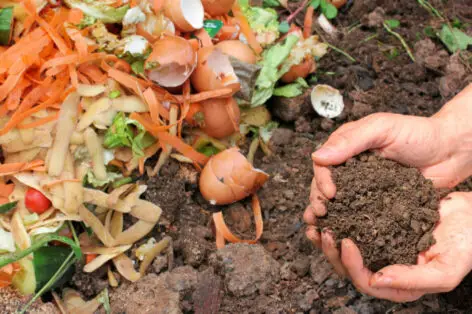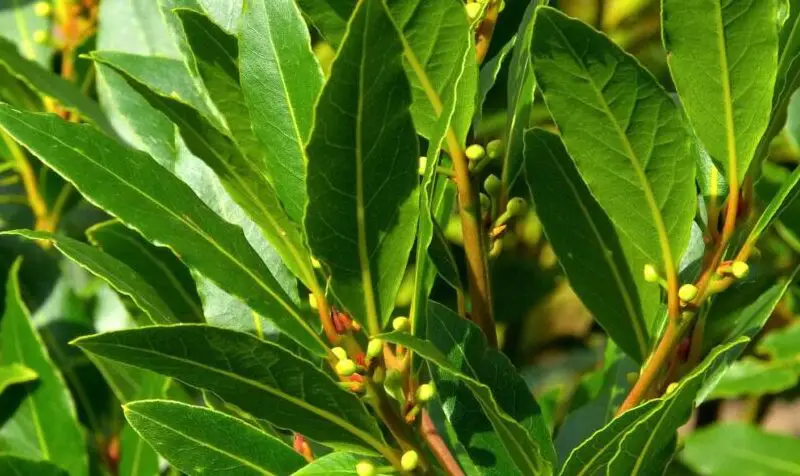The hard leaves of the laurel trees take longer to degrade. If you collect them separately from the other leaves, you can either set up a second compost heap dedicated to “hard” organic waste (you will use it after two years), or speed up their decomposition by shredding them with the mower.
Contents
How to make a laurel compost?
Before mixing them with the others, they must be crushed. If you don’t have a grinder, spread the bay leaves on a plastic sheet and mow them with a lawnmower.
The leaves should then be stacked in the shade in a compost bin or, more simply, in a silo made of wire mesh stretched over stakes. Between each layer of dead leaves, about 20 cm thick, nitrogen-rich organic matter is spread: dried blood, toasted horn, poultry droppings… Also add old leaf compost and natural compost activators, such as comfrey or nettle, directly in the form of fresh leaves or slightly diluted manure.
As with all compost, make sure that the leaf heap always remains slightly moist and well aerated. After 6 months, turn the pile over and enrich it with the same nitrogenous materials as mentioned in the previous step. It will be usable after one year. If you wait 2 or 3 years, you will get a real leaf compost.
How to crush bay leaves?
The lawn mower
For small twigs (less than 1cm in diameter). Pass the mower over the twigs spread out on the lawn, working only in small strips to avoid damaging the material.
The plant shredder
Depending on the material, you can grind larger or smaller quantities. A shredder can be purchased in multiples to share maintenance costs. Some communities can share their equipment with their residents. Do not hesitate to look for a “silent” model.
Wood shredders
They are agricultural type machines, very expensive, which allow to crush more or less consequent trunks or canopies.

Why use laurel compost?
Enriching the soil and correcting deficiencies
Compost is often mistakenly considered a fertilizer. Of course, it enriches the soil with nutrients, like fertilizers, but unlike them, it does much more: it also improves the soil structure, its stability, in a word, its fertility, and this, in a sustainable way. Compost is therefore, as such, an amendment. And an amendment that is easy to obtain, economical, and simple to use!
Improve and rebalance soils
The good thing about compost is that it has the ability to balance soils: on the one hand, it lightens heavy, clayey soils and improves drainage, and on the other, it allows sandy soils to better retain water and nutrients. Regular inputs of compost (every 3-5 years) thus improve soil structure over the long term, whatever its nature, by restoring the clay-humus complex: the soil is looser, more aerated, its water retention capacity is improved, roots develop better, and nutrients are less washed out by rainwater or watering.
Favouring soil life
Like other sources of organic matter (BRF, green manures…), compost promotes soil life (beneficial fungi such as those involved in mycorrhizal symbiosis, microfauna, earthworms…). However, a more living soil is certainly a more fertile, less fragile soil.
How to use compost?
Compost can be used in many ways, for almost all plants in the garden:
- Spread in large handfuls at the foot of all the plants of beds, borders… then incorporated superficially by scratching (+/- 7 lbs per m²);
- Surfacing of potted plants: remove 1 inch of “old” substrate on the surface, and replace it with compost;
- Spread on the ground in a layer of 1 to 2 inch thick, like a mulch on a hoe and weeded soil, at the foot of shrubs, roses, fruit trees, perennials ;
- In the vegetable garden, spread and scratched at the foot of greedy vegetables or incorporated into the soil before planting ;
- Mixed with garden soil during planting (1/4 compost, 3/4 soil);
- To make “home-made” potting soil (1/2 garden soil + 1/4 compost + 1/4 river sand if the soil is heavy; or 2/3 garden soil + 1/3 compost if the soil is light and crumbly; to be enriched with organic fertilizer such as dried blood, crushed horn…);
- To improve heavy, sandy or poor soils: spread 10 to 20 liters of compost per m² and incorporate into the soil; operation to be renewed every 3 to 5 years;
- To feed the lawn: spread the compost on the soil after scarification (2 to 5 liters of compost per square feet) .
Summary
Laurel leaves can be composted, provided they are ground beforehand and do not include branches! If you don’t have a way to shred the leaves, then you should dispose of your green waste by going to the garbage dump.









